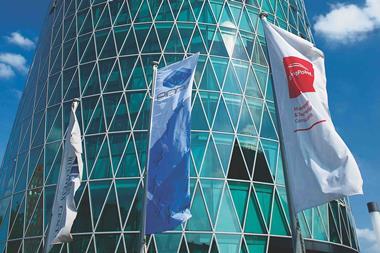GERMANY - Although there are five different ways of creating an occupational pension the most common, with more than 50% of all pension assets and totalling around €400bn, is still through the book reserves of the employer, according to Klaus Stiefermann, general manager of the Association of Company Pension Schemes (aba).
"Then we have four external vehicles of which the biggest is Pensionskasse, the second is direct insurance, we have UnterstutzungsKassen, which is something between being internally and externally funded, and then we have the Pensionsfond, which is the newest and the smallest of our vehicles."
But despite the variety, many have something in common. "When you look at German pensions from the point of view of an economist the biggest factor is that they are really underfunded in virtually all areas, be it private or occupational," says Peter Koenig, director of the society for investment professionals in Germany (DVFA).
"When you are underfunded the question is how fast can you fill up the capital. The supervisory authority requires Pensionskasse, Pensionfonds and insurance companies to undergo stress testing every year and this has had the effect of limiting the average equity portion of a portfolio. As a result they have lost out over the last three years on all equity upswings and consequently their performance has suffered."
"Every year our large bond portfolio is the basis of our performance," says Rainer Jakubowski, chief financial officer of BVV, the pension fund for banking and financial services industry employees. "But the add-on was the result of our equity portfolio, as equity was a strong factor in 2005 because of the market development. A common sense approach would have suggested more equities, but when you compare German pension funds with those in other countries you see that we have a low equity exposure.
The asset allocation was due to the requirements of the law for German insurance companies that sets an absolute maximum of 35% of the portfolio in equities. And then we have the stress test from our supervisory authority, the BaFin, which drives the entire industry to have quite a low potion of equities in their portfolio." BVV's 2005 return was 5.4%. "We had 85% bonds, including credits, just under 12% for equities and the rest in real estate."
"We are going to announce a 2005 return of 4.5% in our annual report which we will present to our AGM in November," says Dirk Lepelmeier, general manager at doctor and healthcare provider pension fund Nordrheinische Ärtzeversorgung (NAEV). "Our true figures, what we really earned in 2005, may be something like 5.5-5.8% but under German financing rules, the HGB balancing rules, we are allowed to build up hidden reserves. And we are running a very rigid risk-oriented model and the more reserves we are able to build, the more intensive we can invest in the years to come."
Germany top 10 pension funds by assets (€m):
1. BVK......................................38000.6
2. Volksfuersorge...................23503.1
3. BVV......................................16933.2
4. Bayerische Arzte...............11327.1
5. Winsecura..........................10853.1
6. Siemens Pension Trust....10500.1
7. VBL.......................................10000.2
8. Hannoversche PK................8535.5
9. Nordrheinische Arzte...........7525.1
10. Baden-W. Arzte...................6750.2












No comments yet